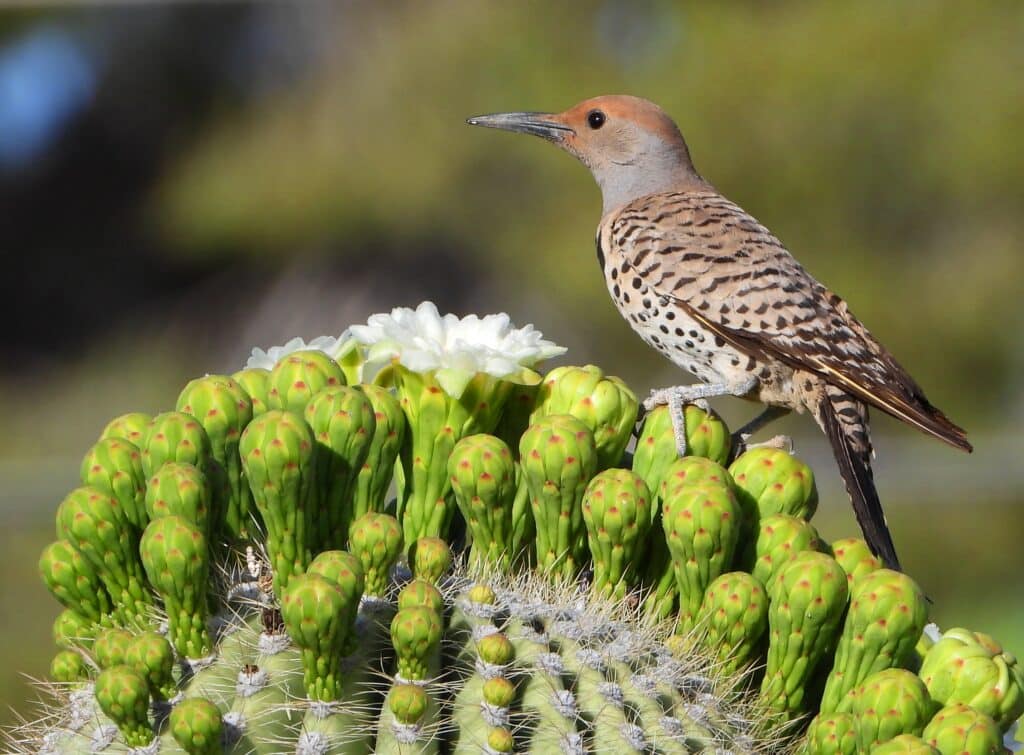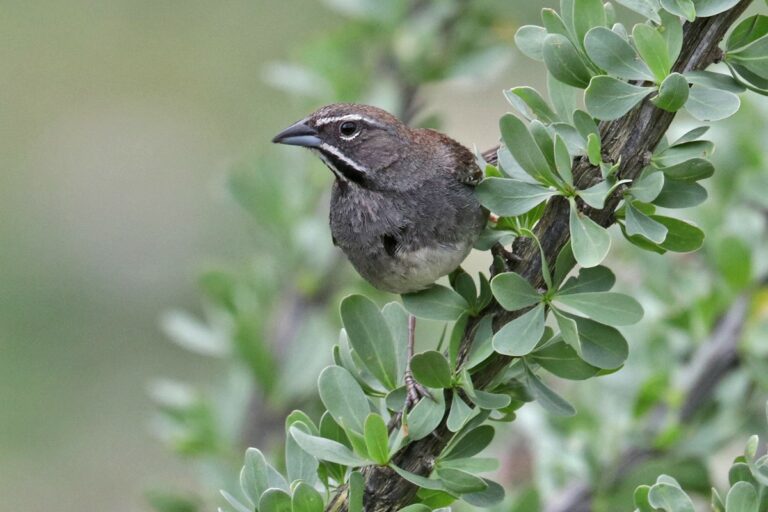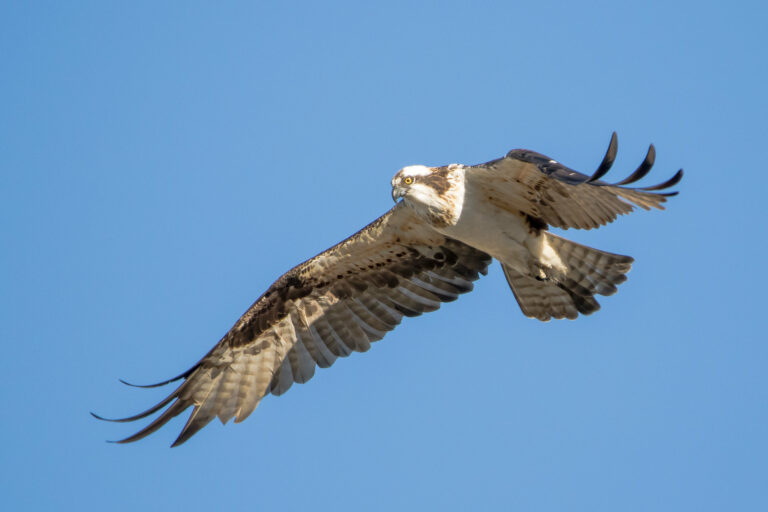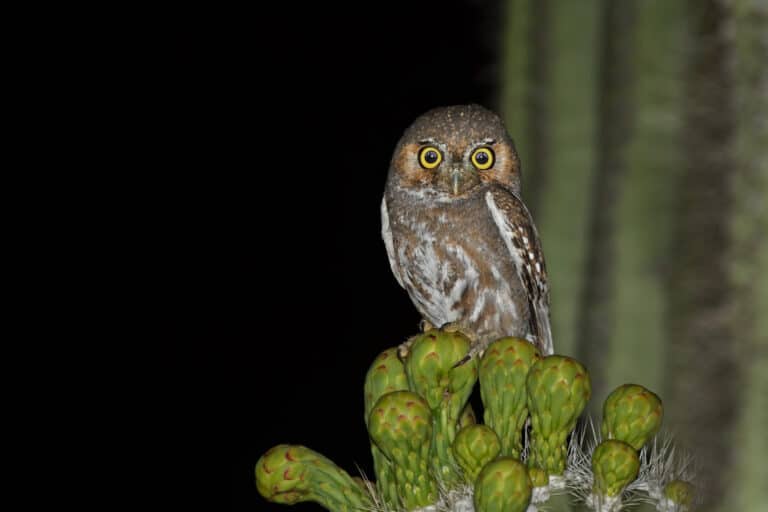Upon arriving in Southeast Arizona years ago, it took me a while to realize that we have a totally unique flicker species here that lives in the deserts of the Southwest. I can be forgiven, as scientists have debated the merits of listing the Gilded Flicker as a separate species and have gone back and forth on the issue. Taxonomists had grouped it with Red-shafted and Yellow-shafted flickers as a single species, the Northern Flicker, but based on limited hybridizing, and habitat and natural history differences, the Gilded Flicker was split from the group in 1995. These birds all look very similar—basically, the Gilded has the gray face and red mustache of the “red-shafted” Northern Flicker, and the yellow wings of the “yellow-shafted” form.
Gilded Flickers are not as common or conspicuous as Gila Woodpeckers, and if you don’t recognize their piercing, single crys of peah! and repeated wik wik wik wik calls, you might never know they were even out there among the saguaros. The fact that they mainly forage on the ground for ants doesn’t make them any easier to find. It’s possible that Gilded Flickers consume more ants than any other North American bird, and their tongues can extend a full 5 inches to probe anthills!
Gilded Flickers are permanent residents in southern Arizona, southeast California and Nevada, down into Baja and northwestern Mexico, and can be found around Tucson in Saguaro National Park and Tucson Mountain Park where they nest in saguaro cavities. Their population within the United States is reported to have declined by an estimated 54% between 1970 and 2014. To document their presence here, the Arizona Important Bird Areas (IBA) program (co-managed by Tucson Audubon) is conducting spring surveys that anyone can participate in. If you’d like to contribute to this community science project and help conserve Gilded Flickers, please visit the AZ IBA website or contact Jennie MacFarland.




